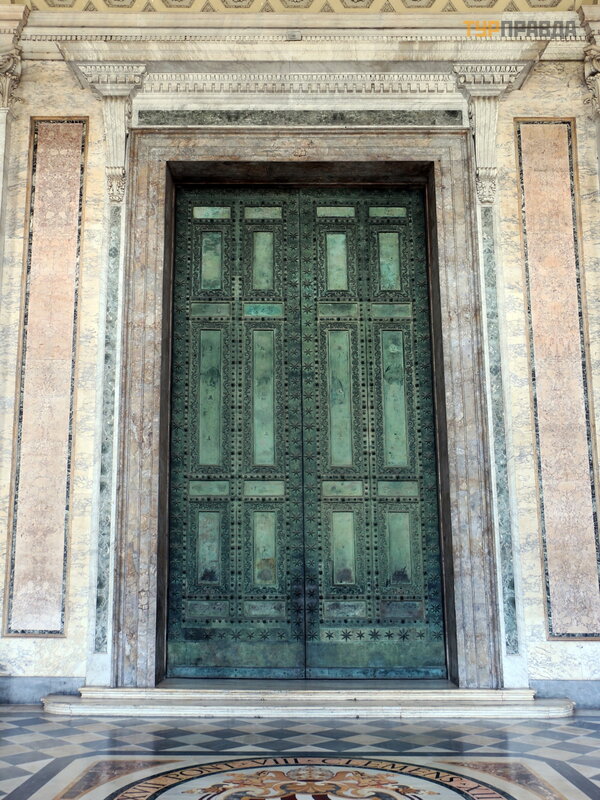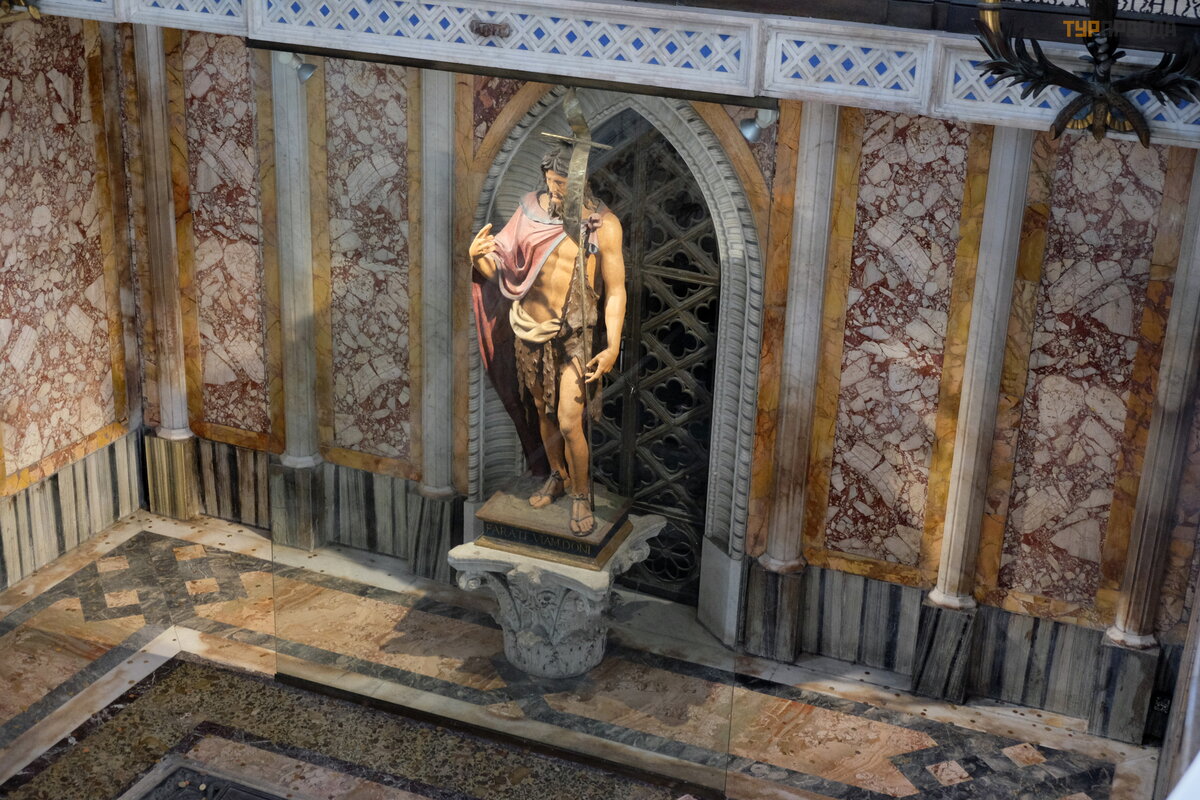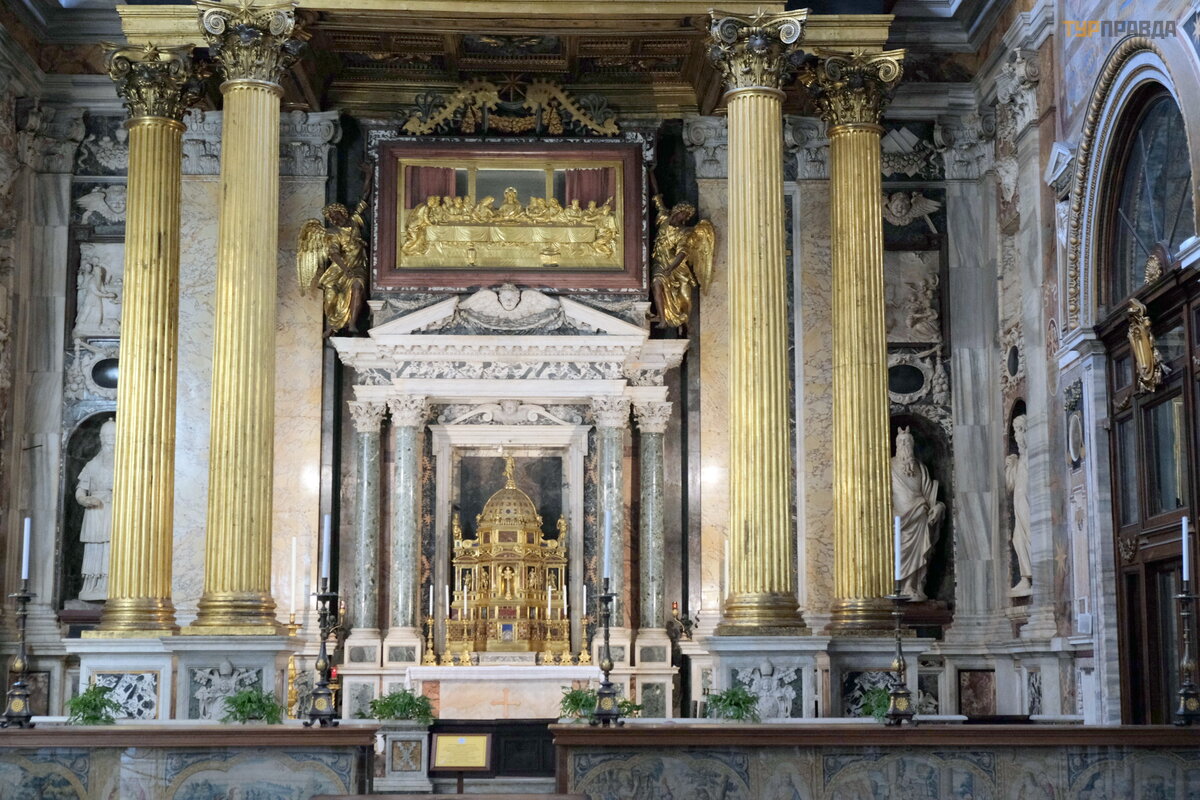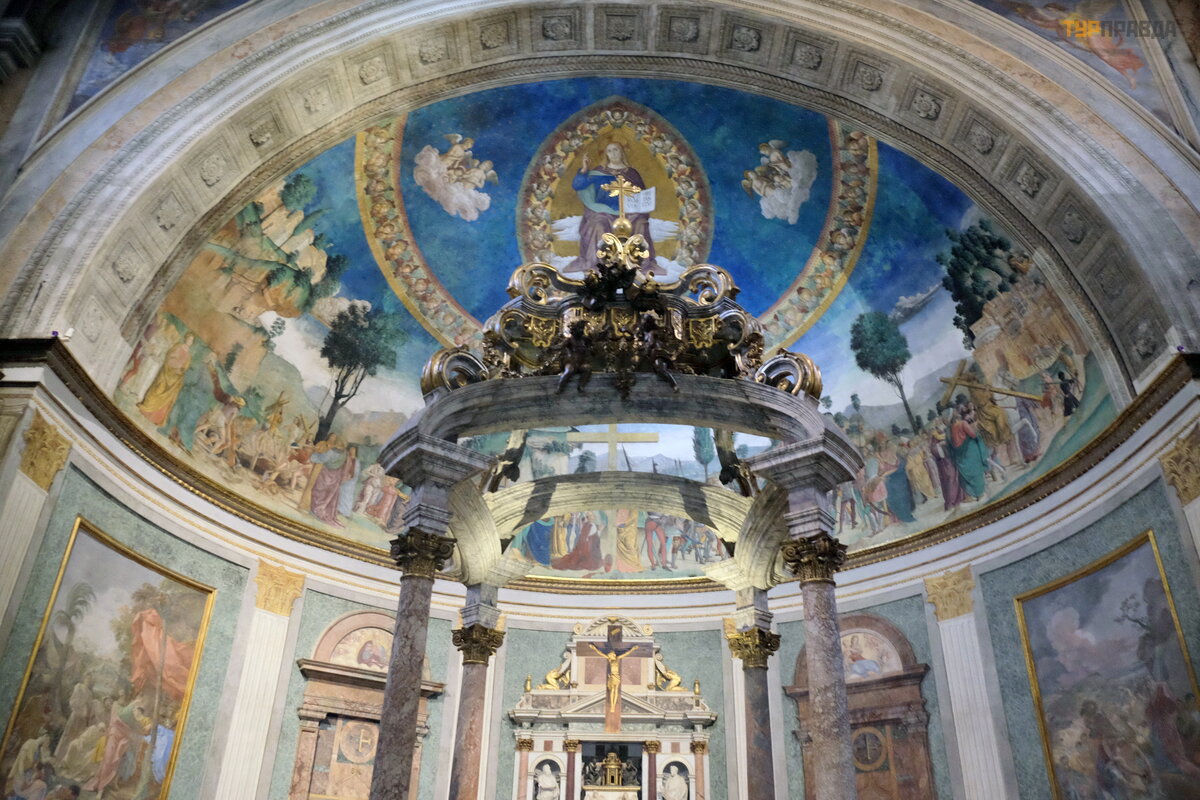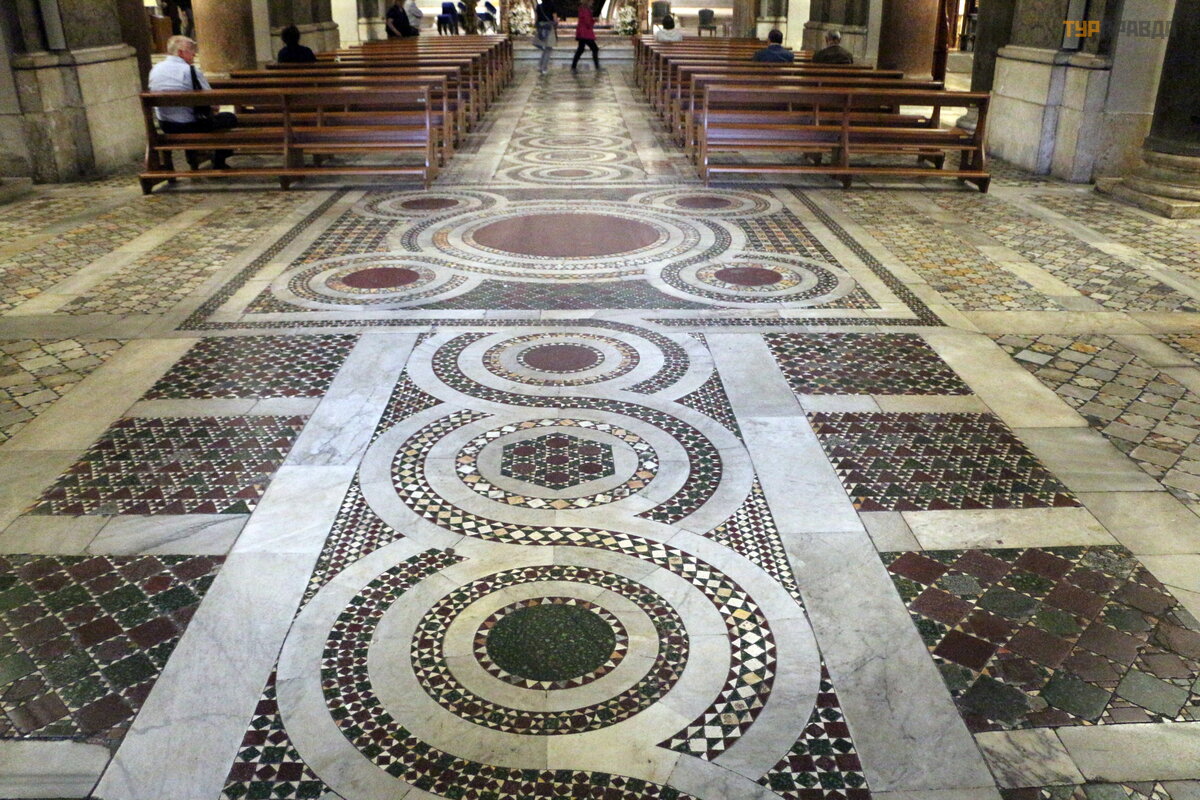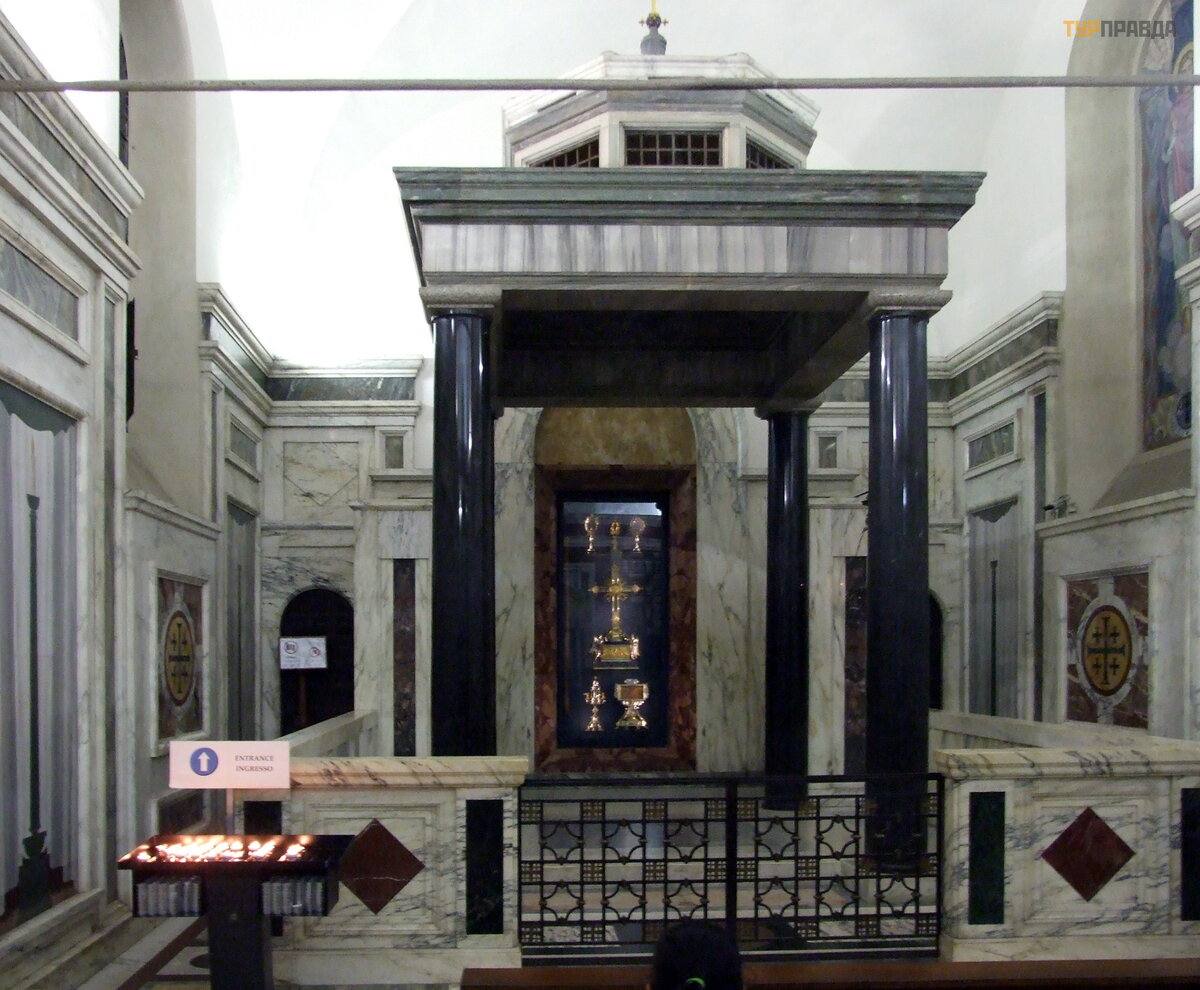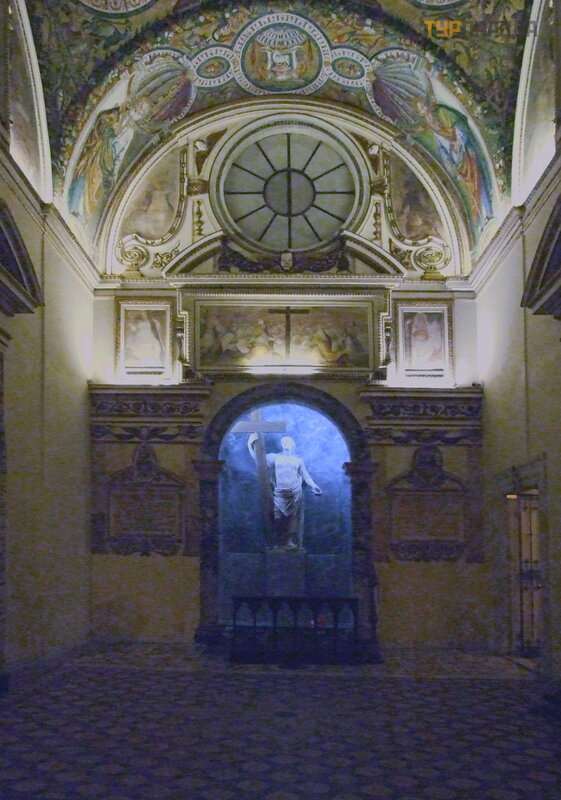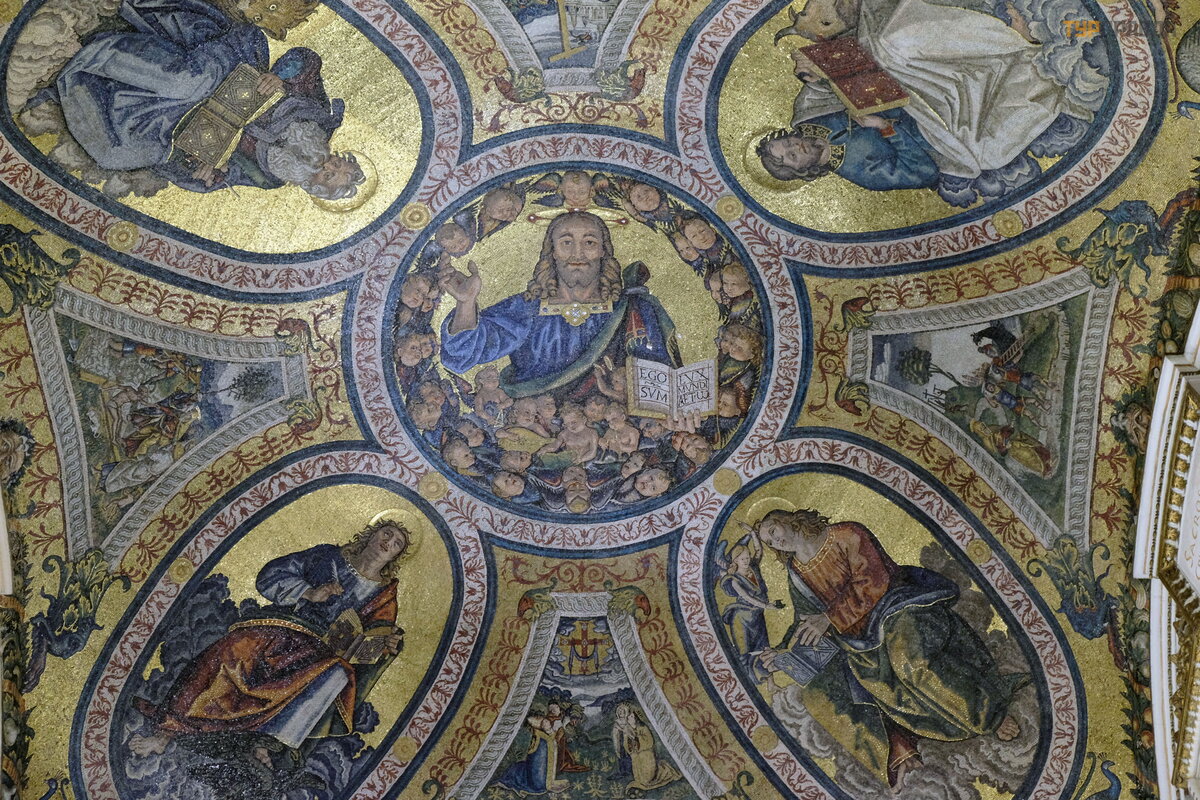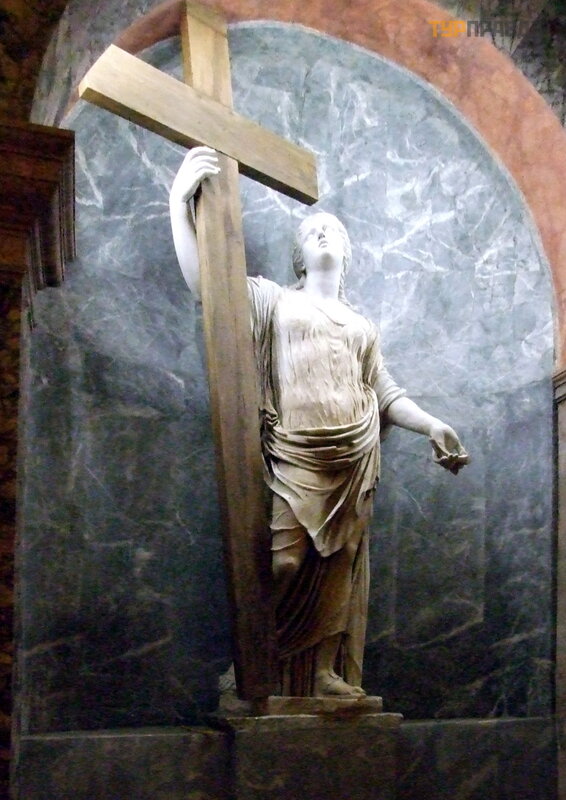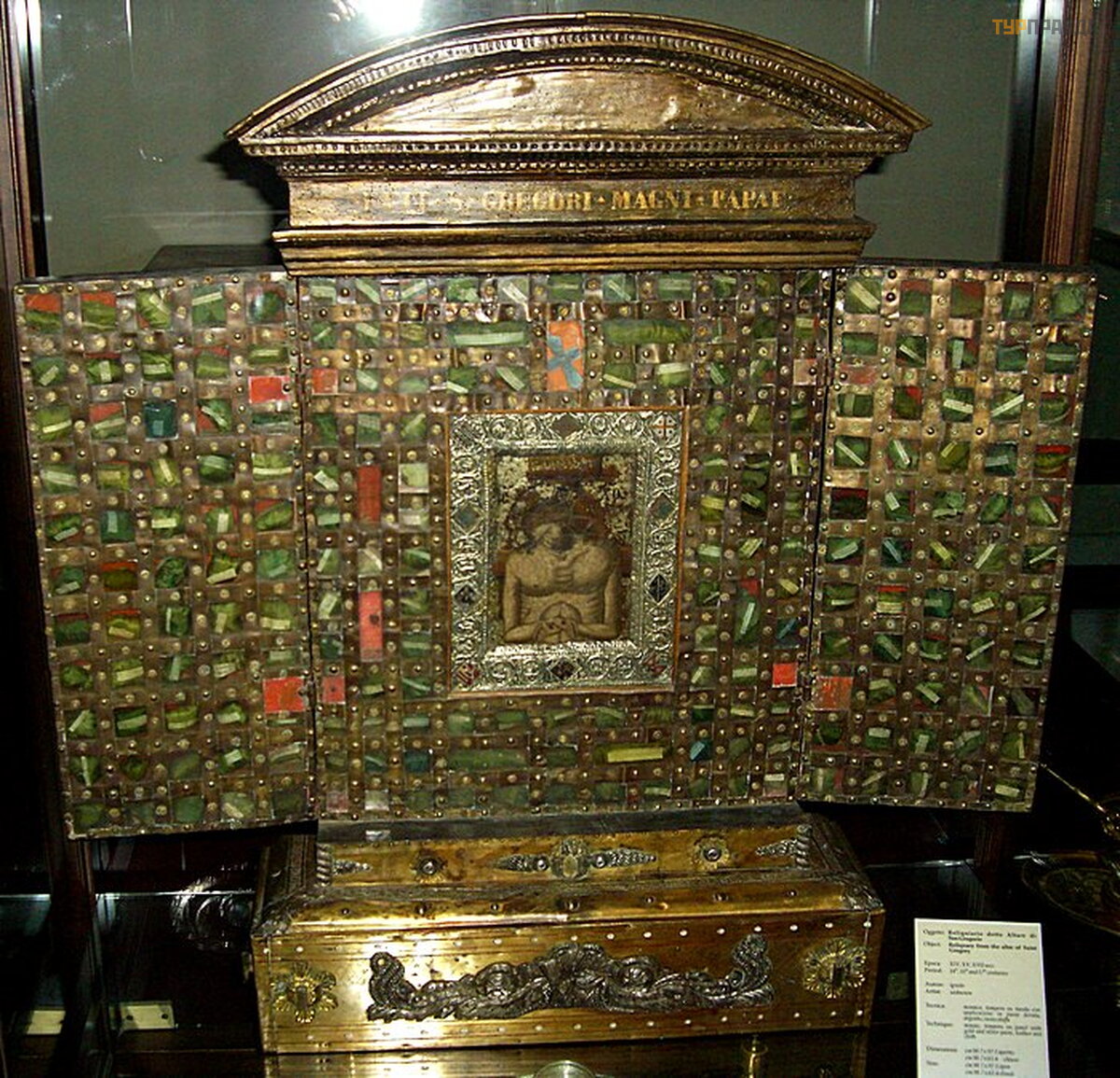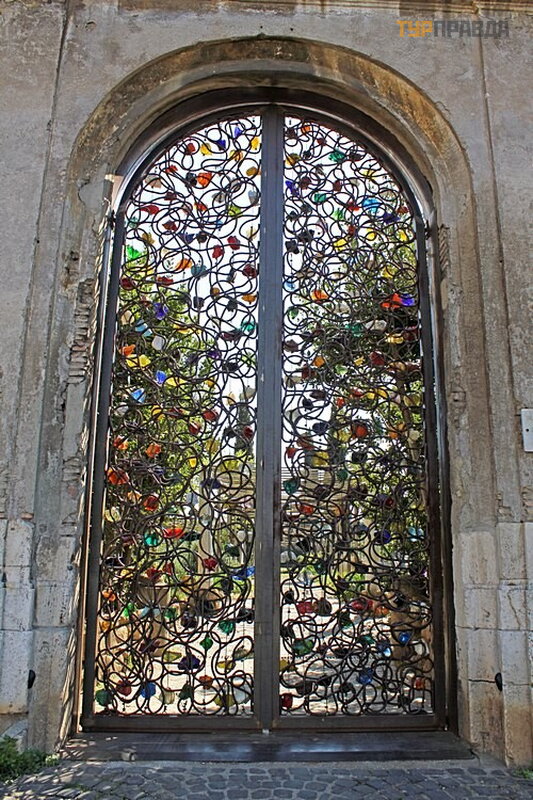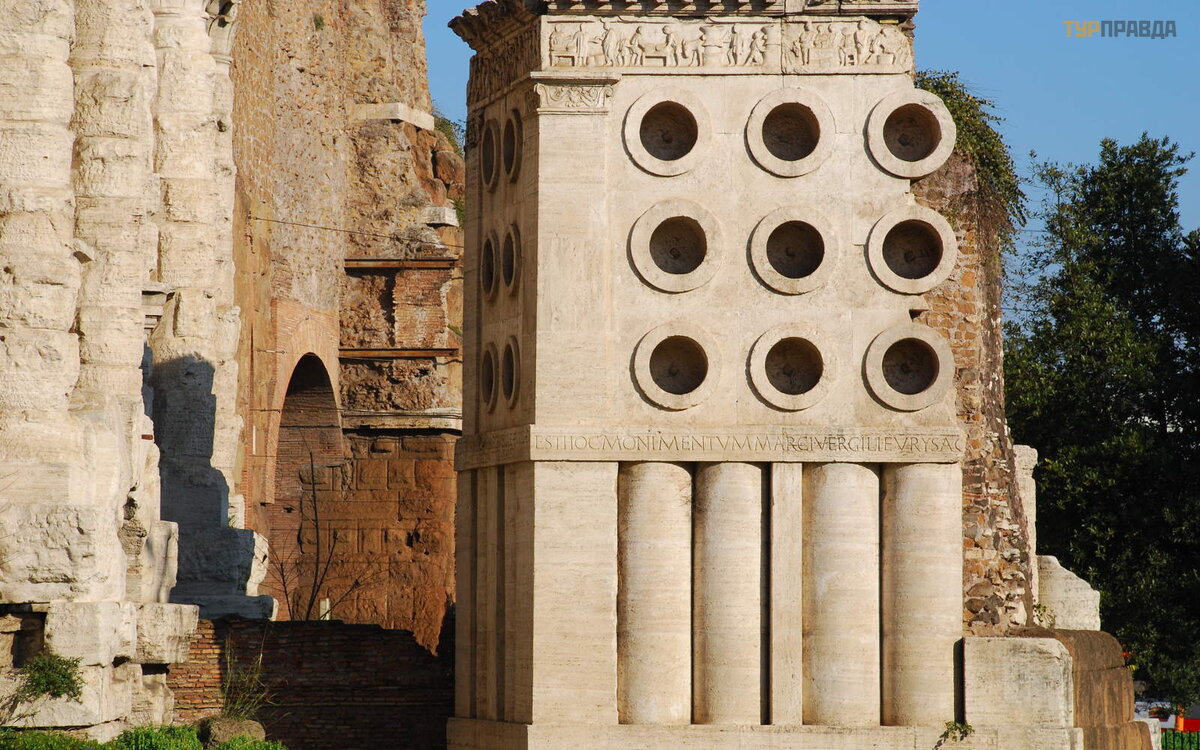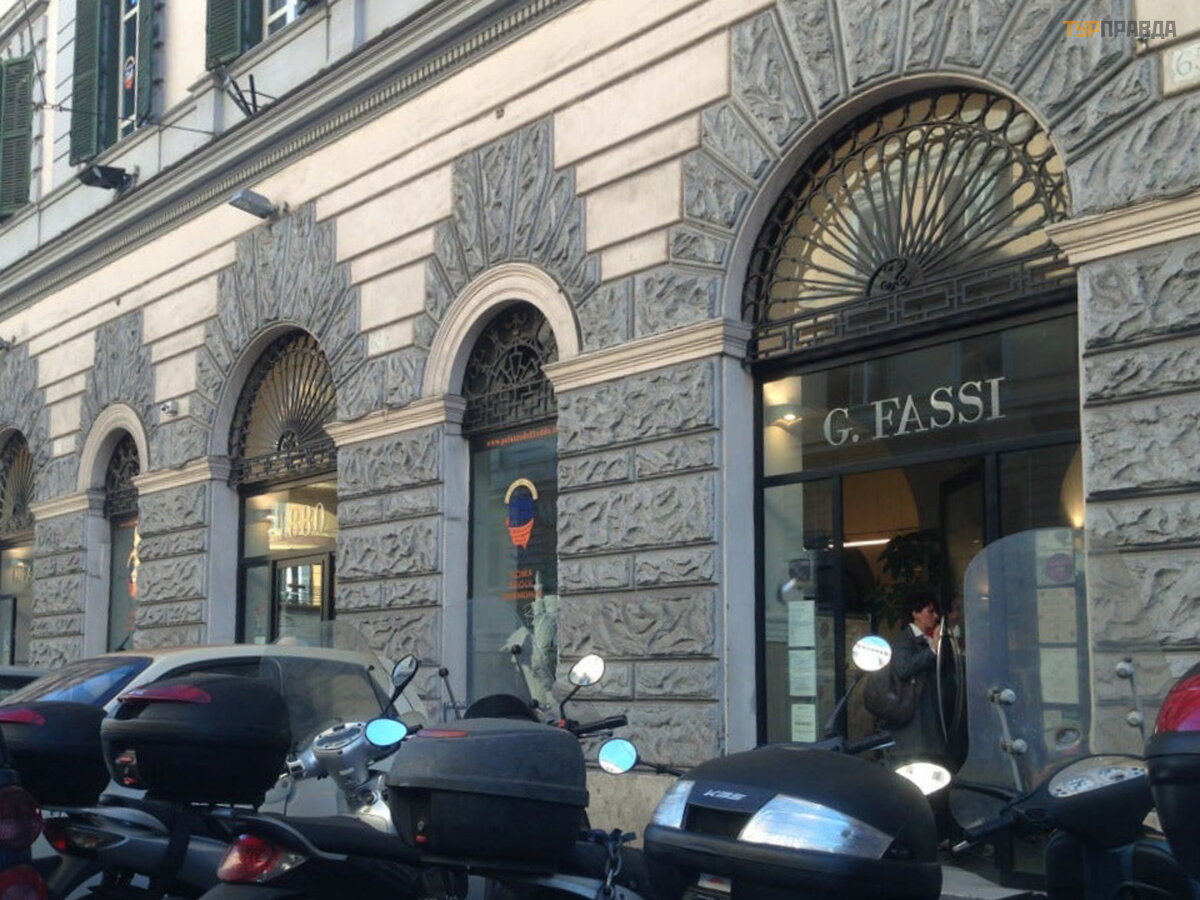Puglia and a bit of Rome. Part 13. Rome. Basilicas of the Lateran

To be continued. Start here >>>
We still had a day and a half left in Rome before our departure. On this day, we first decided, as Khobotov from the Pokrovsky Gates said, “Watch the frescoes of the Novodevichy Convent”, that is, the basilica of the Lateran Hill, especially since it is very close to our room.
We go out along the lanes to the wide and straight Via Merulana, connecting the two great basilicas - Santa Maria Maggiore and San Giovanni in Laterano, we walk along the street past the churches
The Church of Sant Alfonso is one of the few examples of neo-Gothic architecture in Italy. Built in 1859 by Scottish architect George Wingley.
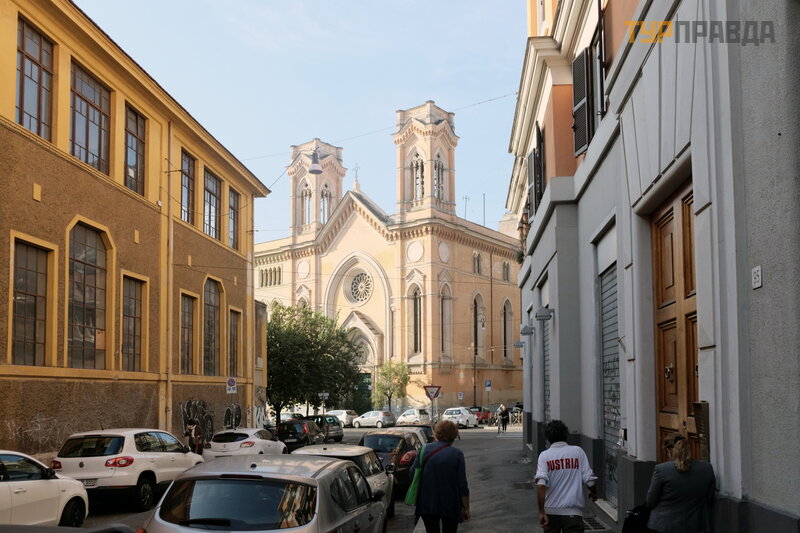
Church of Marceline and Peter (18th century):
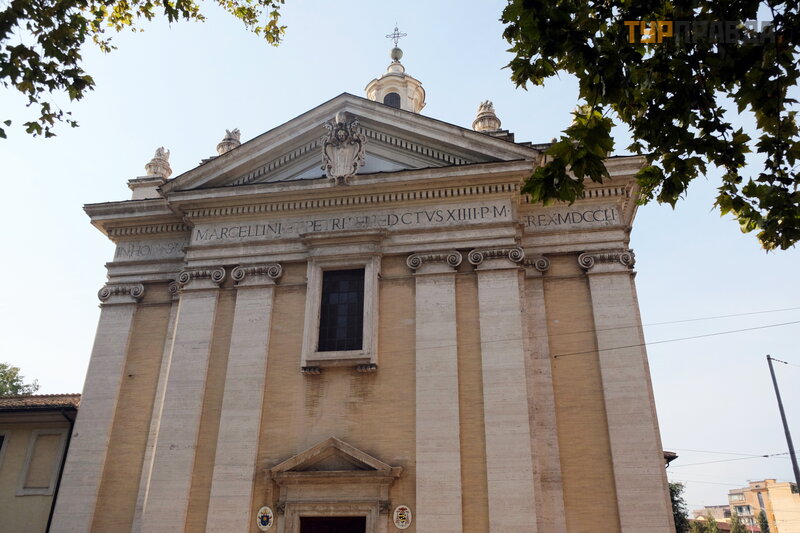
And here is the wide Lateran Square, or piazza di Porta San Giovanni with the world's largest Egyptian obelisk, now stands on the site of the equestrian statue of Marcus Aurelius,
which has been moved to the Capitol:
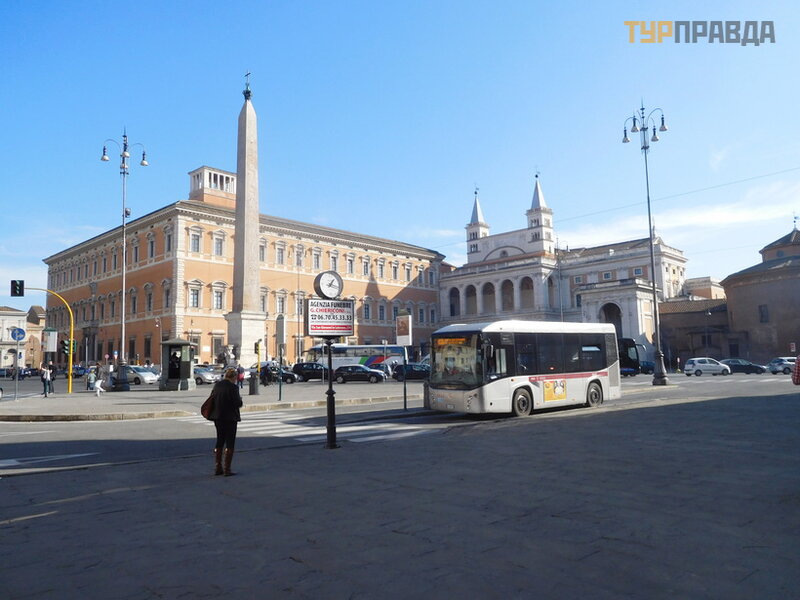
The Lateran Palace, the residence of the popes from the 4th to the beginning of the 14th century. (Avignon captivity). New building in 1568. Architect - Domenic Fontana. And nearby is the Cathedral of St. John the Baptist on the Lateran Hill, or the Basilica of San Giovanni in Laterano "The Most Holy Lateran Church, mother and head of all the churches of the city and the world" (313-318). The main church of the Catholic world.
The temple has been rebuilt many times, including by such great architects as Borromini and Domenico Fontana, as a result it is a mixture of different architectural styles. The current facade with giant sculptures of John the Baptist, John the Evangelist, the main fathers of the church and Jesus in the center of the composition was erected by Alessandro Gallilei in 1735.
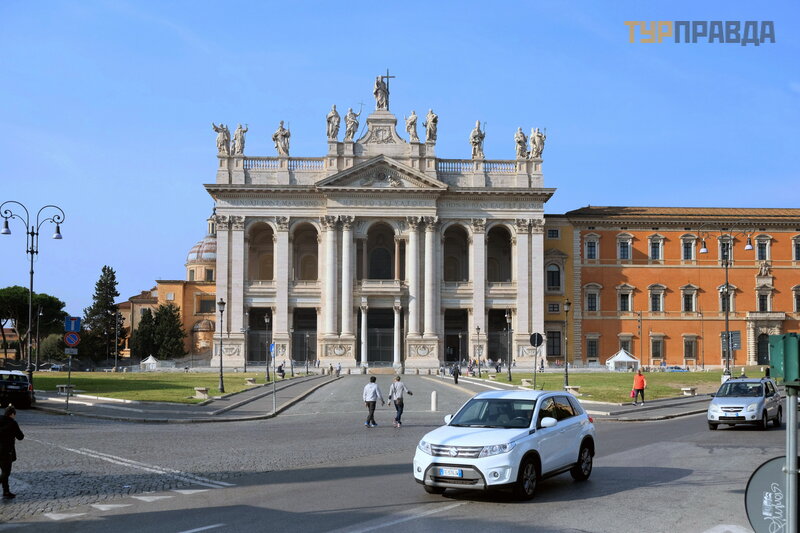
The faç ade of the north transept (facing the square with an obelisk) with a loggia and two hipped bell towers was designed by D. Fontana in 1586-1588.
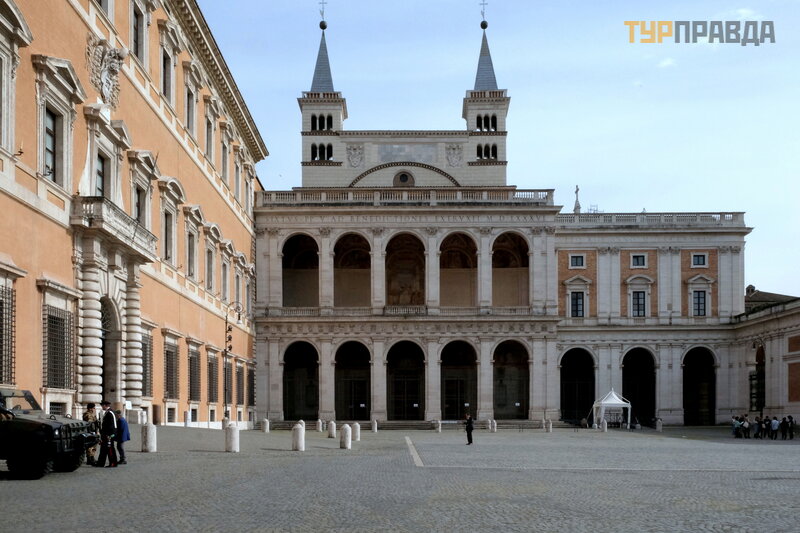
In the portico there is a statue of Emperor Constantine; it was found at the Imperial baths in the Quirinal:
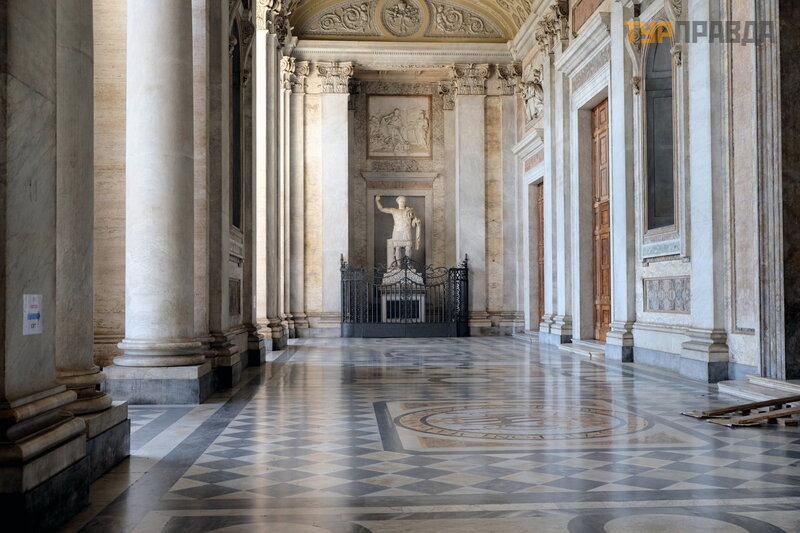
Five gates lead inside the temple. The central portal (bronze doors) has been preserved since ancient times from the first basilica built in 324.
Huge statues of the twelve apostles (1703) made by the students of Bernini. Domenico Fontana was in charge of making the statues, and Carlo Maderno made sketches of the statues.
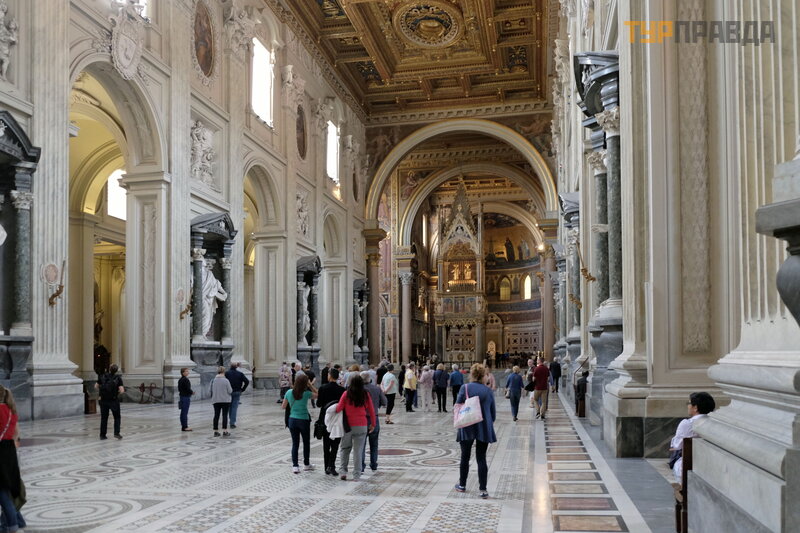
Tabernacle on four columns (14th century, partially changed in the 16th century).
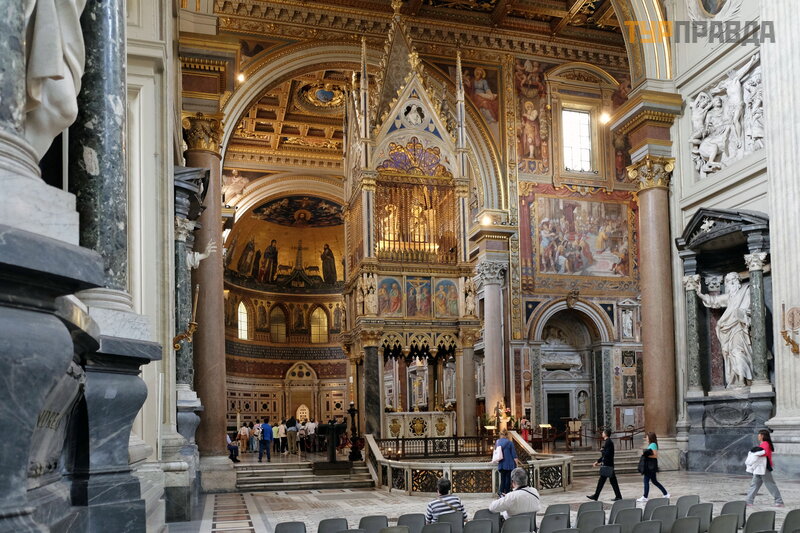
At its top, in silver reliquaries made in the form of figures of the apostles with halos,
holy relics are kept - the heads of the apostles Peter and Paul.
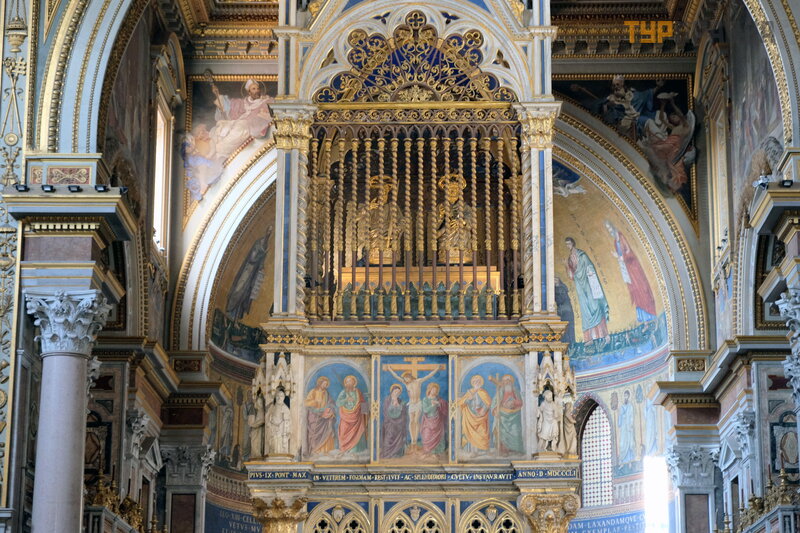
Under the tabernacle is a place of confession - a confessional. In front of the statue of John the Baptist is the burial place of Pope Martin V.
The most valuable mosaics from the time of Emperor Constantine. In the 13th century, the mosaics were restored by Jacomo Toritti.
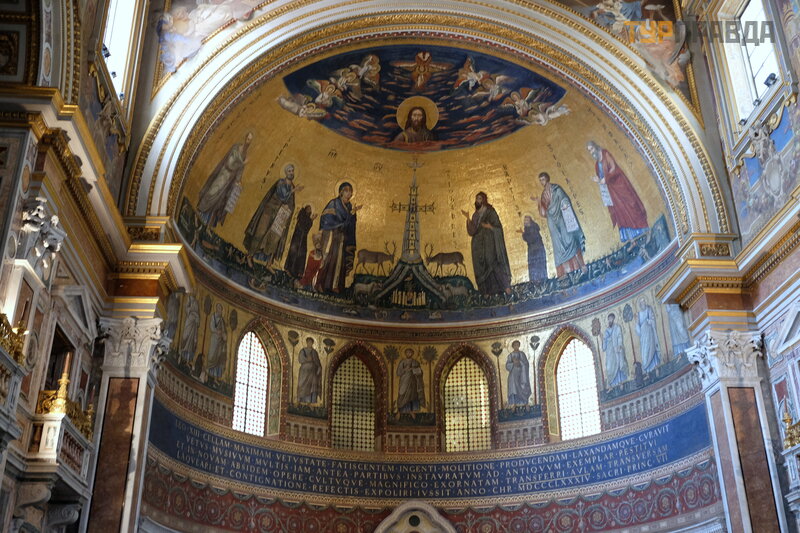
The papal throne. The marble patterned floor in the basilica is considered one of the most striking works of the famous masters of the Cosmati family.
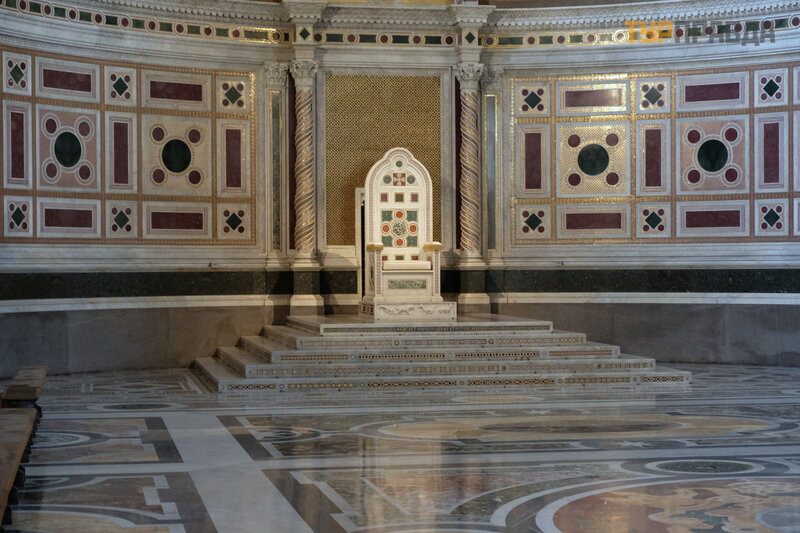
The wooden ceiling of the nave is decorated with coffered ornaments. In the center of the richly carved ceiling is a panel with the coat of arms of Pope Pius V.
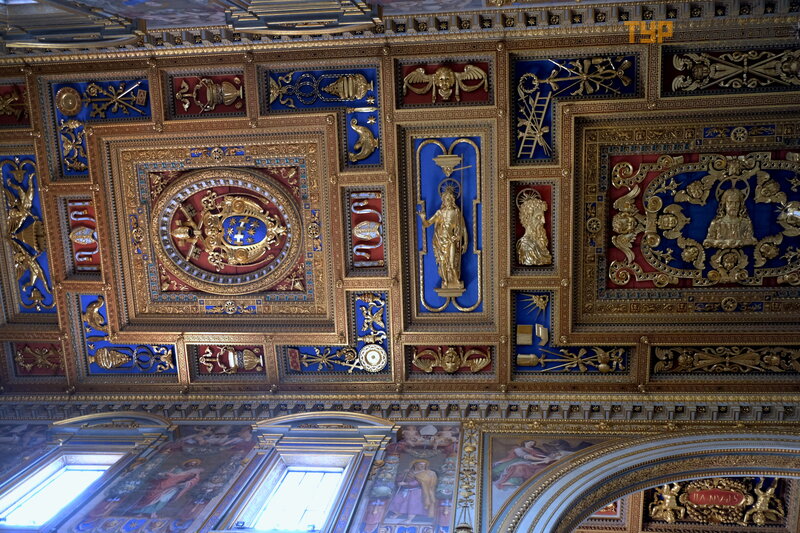
A large altar dedicated to the Most Holy Sacrament, with a Baroque ciborium adorned with precious stones.
Four gilded bronze columns were taken by Emperor Titus from the temple of Solomon destroyed by him in Jerusalem.
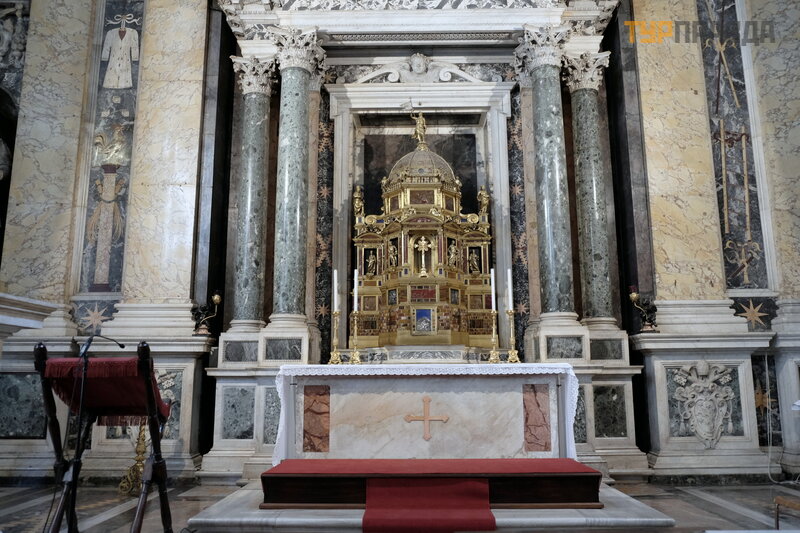
Above this ciborium there is a reliquary with a piece of a table on which Christ is believed to have eaten during the Last Supper.
Burial of Pope Leo XIII:
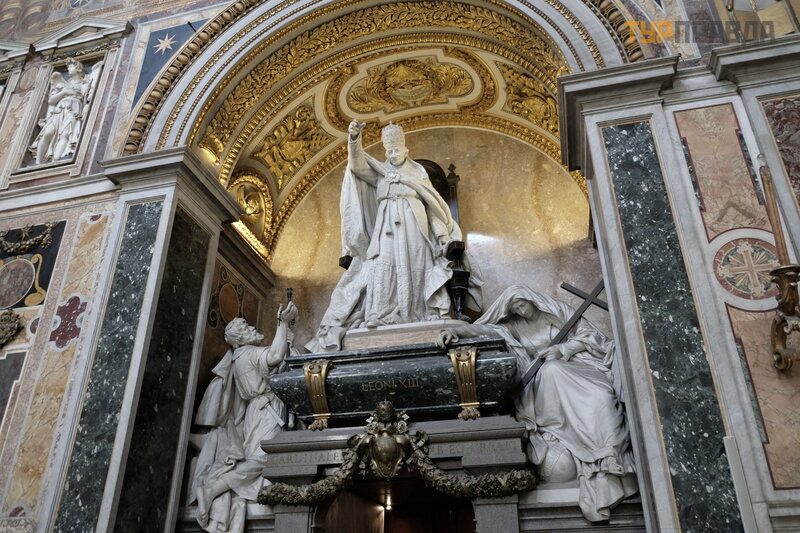
Magnificent large organ of the 16th century:
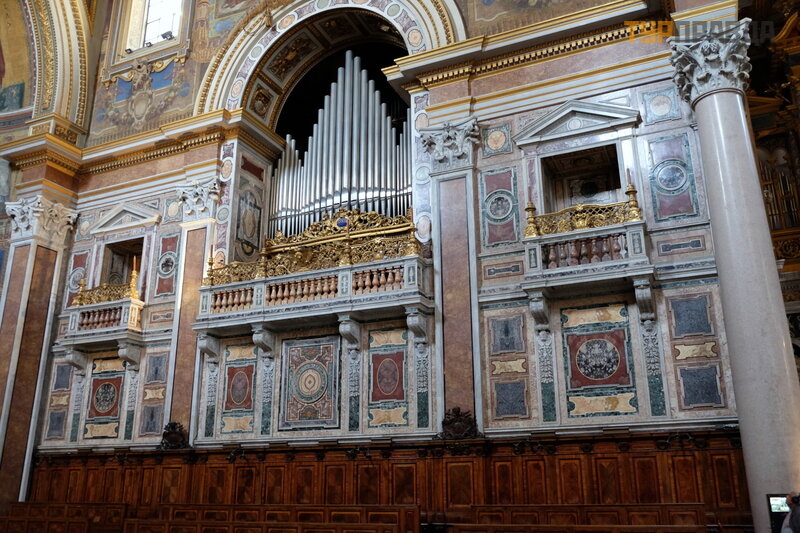
Next to the basilica is the baptistery. There is a legend that in the building that stood on this site, Constantine the Great himself was baptized. For a long time the baptistery was the only one in Rome. The building was rebuilt several times, most recently in the 17th century.
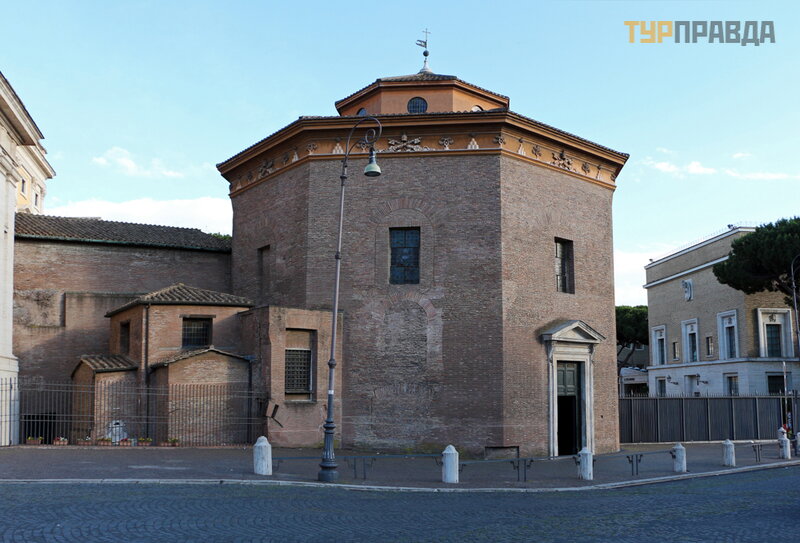
Eight porphyry columns surround the central font:
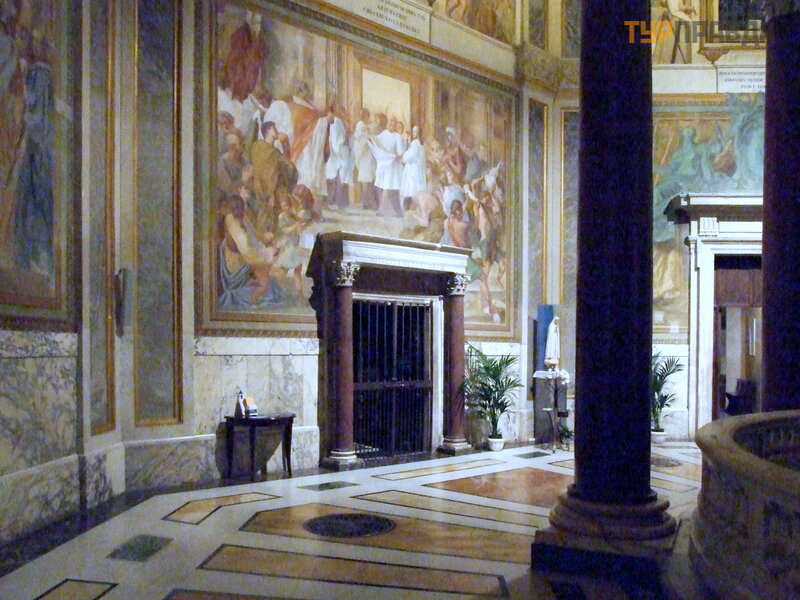
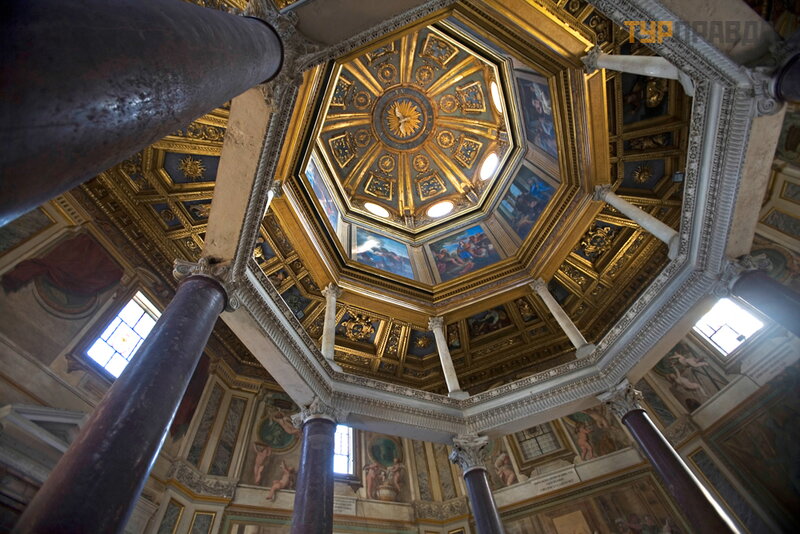
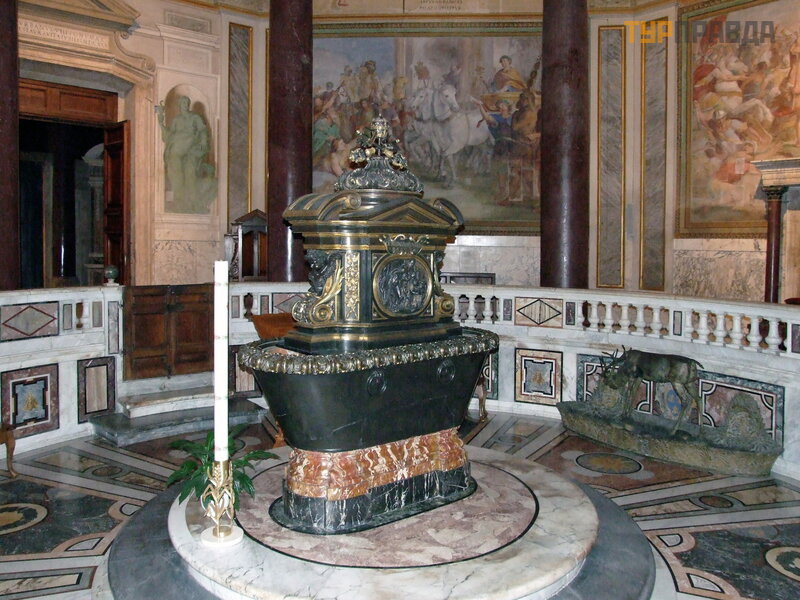
A grand niche from the 9th century, an old apse with magnificent mosaics. These are the only remains of the old refectory of the patriarchs from the Lateran Palace.
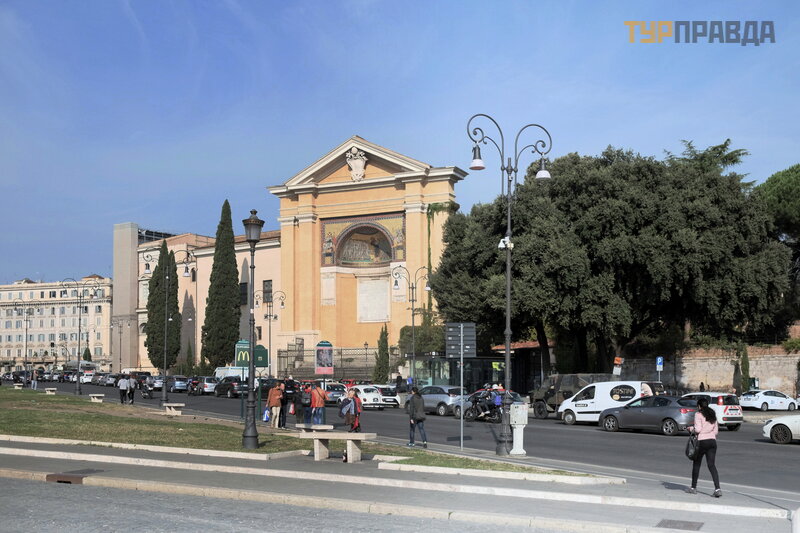
The holy staircase of the old Lateran Palace, according to an ancient Christian legend, this staircase was brought in 326 from Jerusalem by Queen Helena from the palace of Pontius Pilate, and Jesus Christ ascended to the court along it.
All 28 steps of the stairs are covered with wooden boards - due to the special holiness of this relic, believers climb it only on their knees, reciting special prayers at each step. In those places where traces of the blood of Christ, who climbed the stairs after the scourging, remained on the stairs, special glass windows were made.
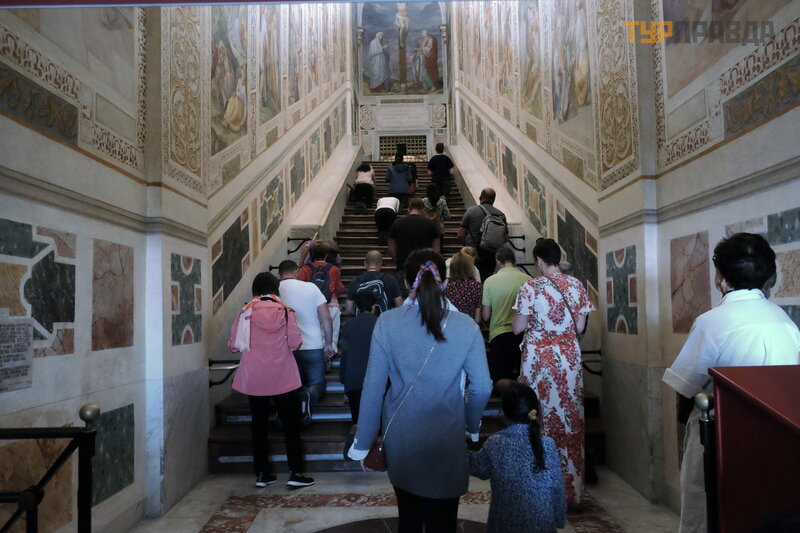
On the sides of the holy steps, the architect Fontana provided two additional stairs, which can be used to climb to the second floor,
to the papal chapel of the Holy of Holies (St. Santorium).
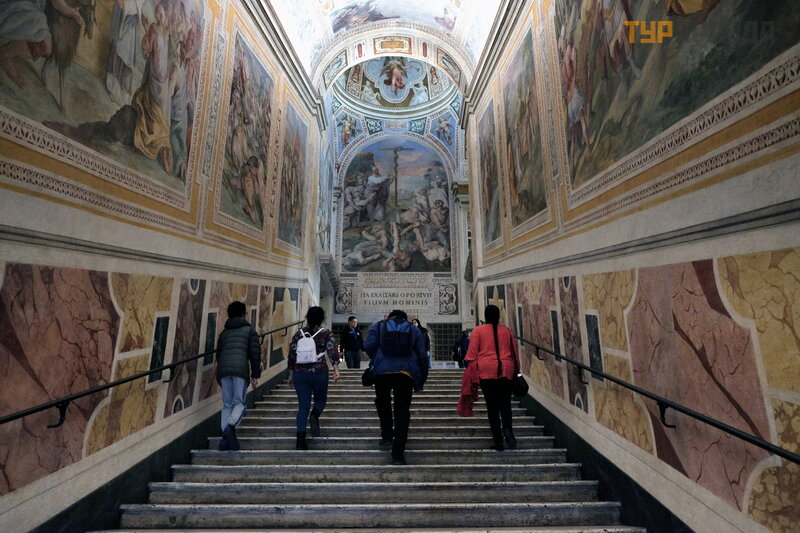
In the altar of the chapel there is Akeropita (a picture not created by a human hand) - an icon of the 6th-7th centuries depicting Christ-Pancrocratum (Savior-Almighty), which was carried around the city during the plague. According to legend, the icon, also called Uronika, was started by the Evangelist Luke and completed by angels. The entrance to the chapel is paid, but you can look through the bars.
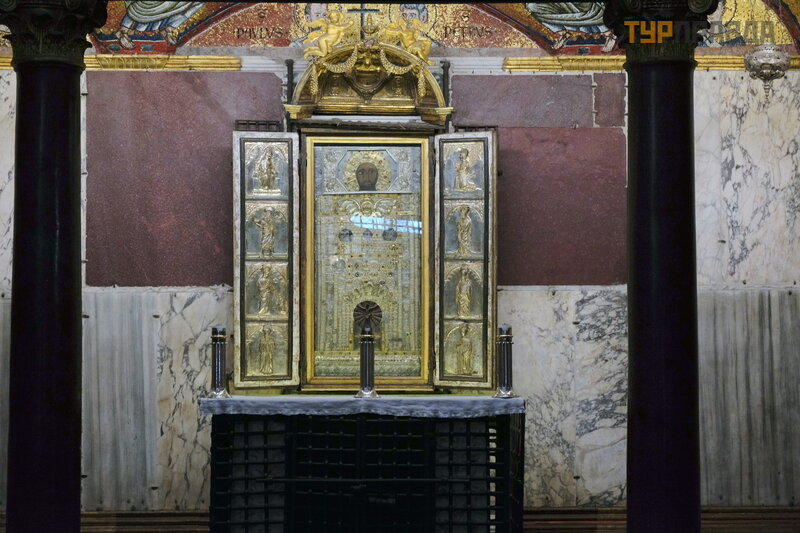
The vaults of the Sancta Sanctorum are painted with beautifully preserved frescoes from the 13th century.
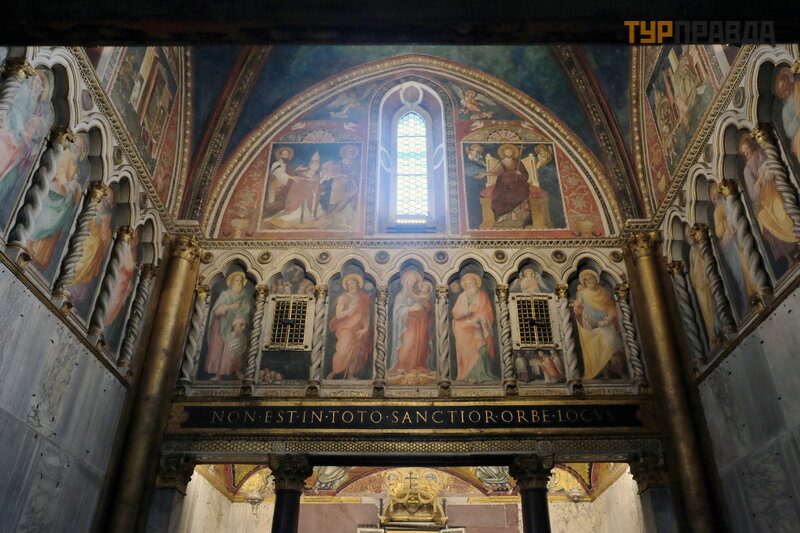
The square and the metro station of the same name are located near the Porta San Giovanni at the Aurelian Wall. The gate was built under Pope Gregory XIII in 1574 near the ancient Donkey Gate (with towers) built in 270-273. Two round towers were added later.
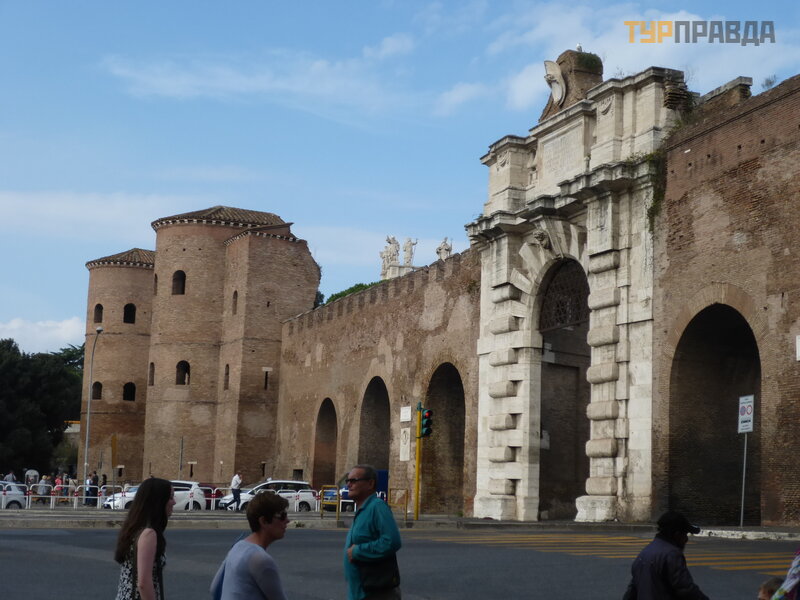
Next we go along the boulevard,
which stretches along the former city wall.
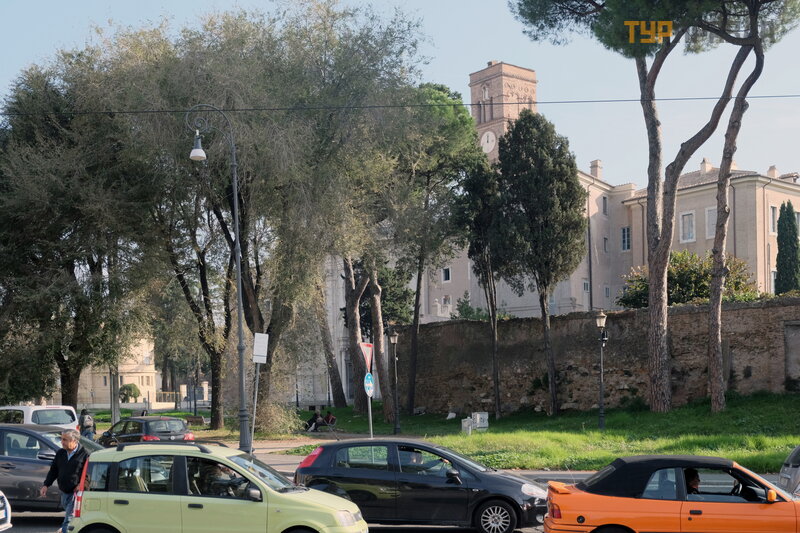
At the very end of the boulevard is one of the seven pilgrimage churches of Rome - the Church of the Holy Cross of Jerusalem (Santa Croce in Gerusalemme). Once upon a time at the dawn of Christianity, the palace of Helen, the mother of Emperor Constantine, stood here. Elena brought priceless relics from Jerusalem, among which were the particles of the Holy Cross. To store relics, part of the palace was rebuilt into a church at the beginning of the 4th century. Little remains of the church from the time of Helena and Constantine, it was repeatedly renovated and rebuilt. And the current facade was completely added in the 18th century.
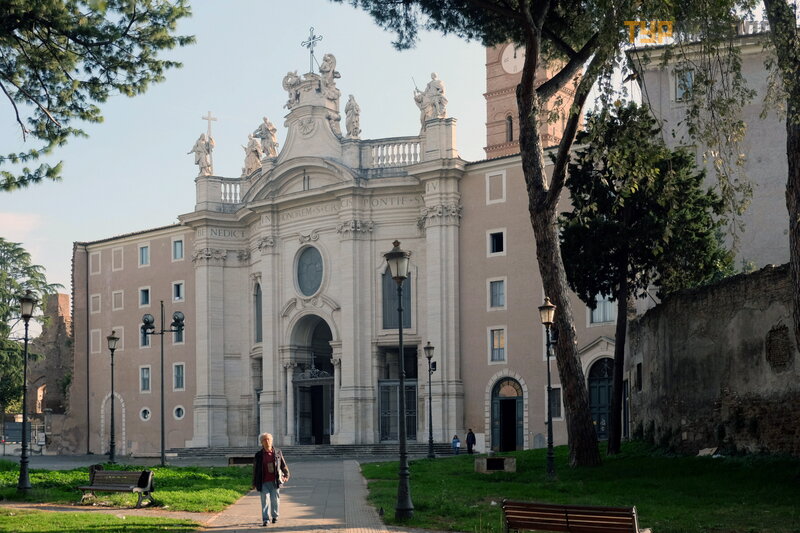
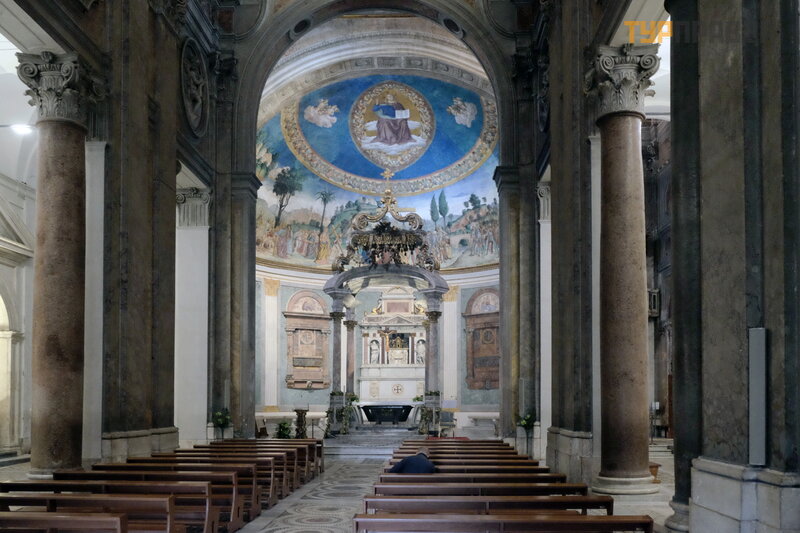
Frescoes by Antoniazzo Romano (XV century):
Here, too, the most magnificent Kosmati floors:
The main shrines are located in the Chapel of the Saints,
where the staircase called "The Way of the Cross" leads, on the sides of the scene of the Passion of Christ.
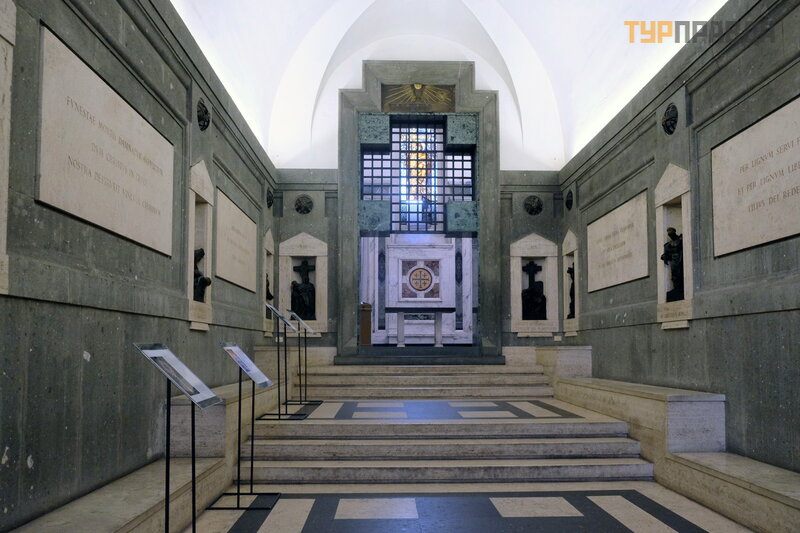
Pieces of the Holy Cross embedded in the "reliquary of the Holy Cross" (work by J. Valadier, 1803):
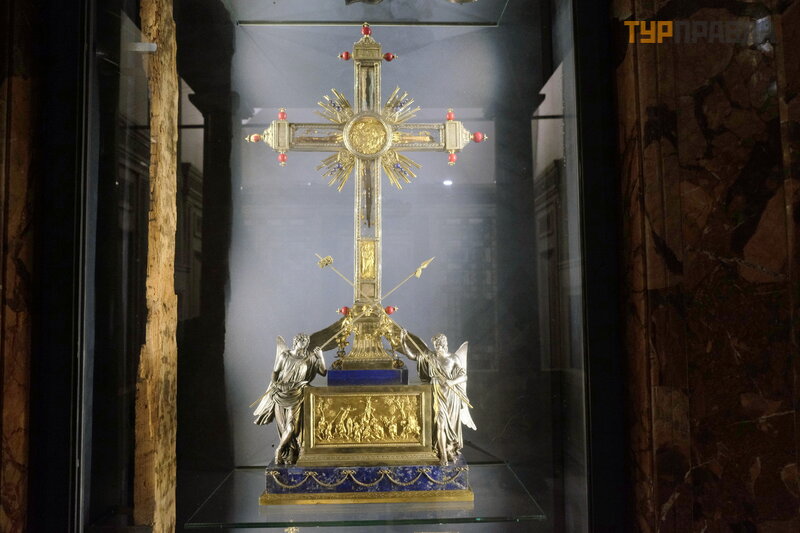
Titlo INRI (tablet with the words "Jesus of Nazareth, King of the Jews", written at the direction of Pilate), one of the nails with which the body of Christ was nailed to the cross:
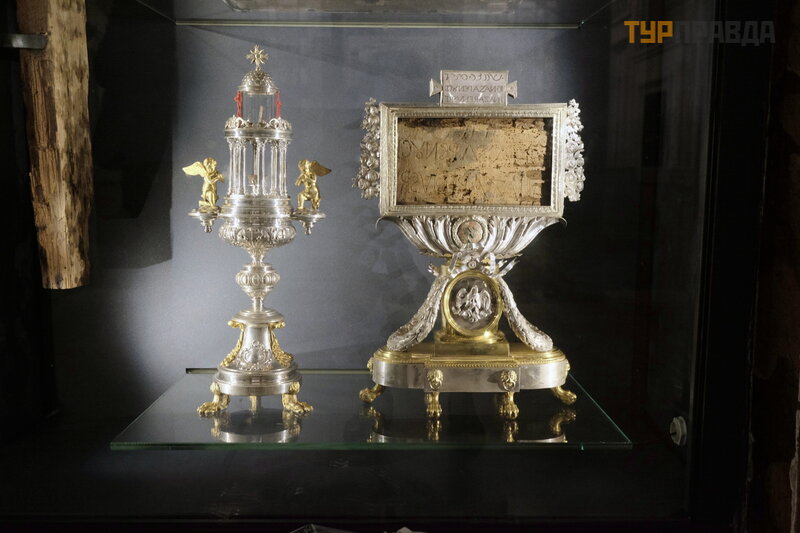
Two thorns from the crown of thorns, the finger of the Apostle Thomas, the crossbar of one of the crosses of the robbers executed with Christ.
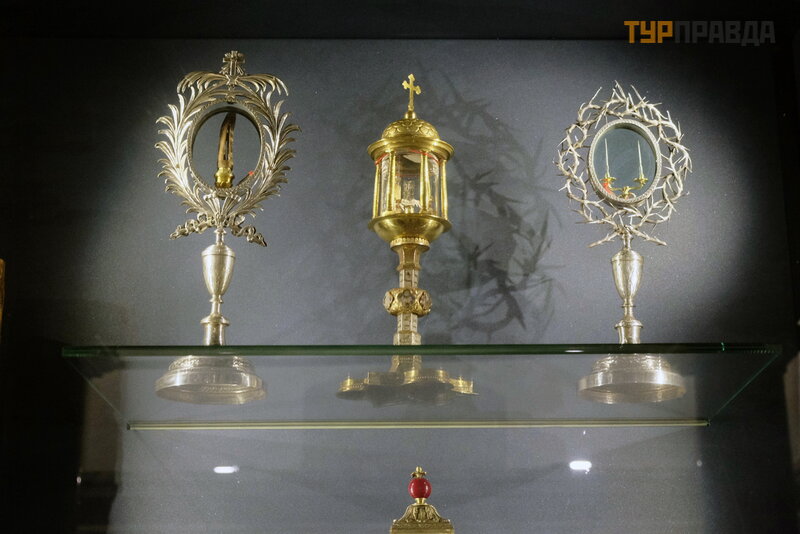
Several steps lead down to the Chapel of Saint Helena.
Mosaics by Baldassare Peruzzi based on drawings by the Italian artist and architect Melozzo de Forli (XV century).
A huge statue of the queen,
remodeled from an antique statue. In one hand is the Holy Cross, in the other two nails. Under the statue is earth from Calvary, brought by the queen on ships from Jerusalem.
Near by the chapel of St. George (1495-1520), the altar of St. Gregory with a reliquary made in the form of a triptych in a silver frame, as well as a mosaic of the 13th or 14th century depicting the Suffering Christ.
And here is the old monastery garden, there is no entrance. But from the street you can see such a chic door:
Turning to another gate of the Aurelian Wall - Porta Maggiore (Porta Maggiore - "Great Gate")? eight of the eleven ancient aqueducts converged here.
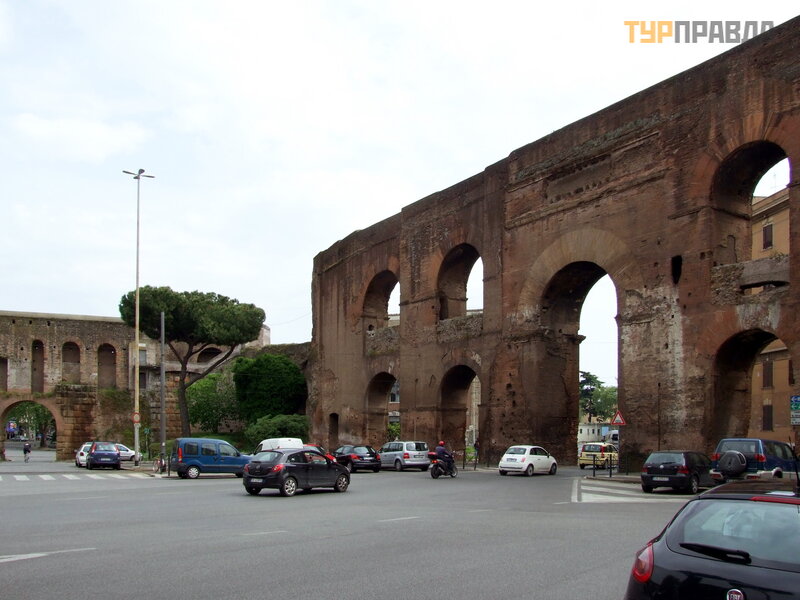
From the back of the gate you can see the so-called. "Baker's Tomb". 173 BC e.
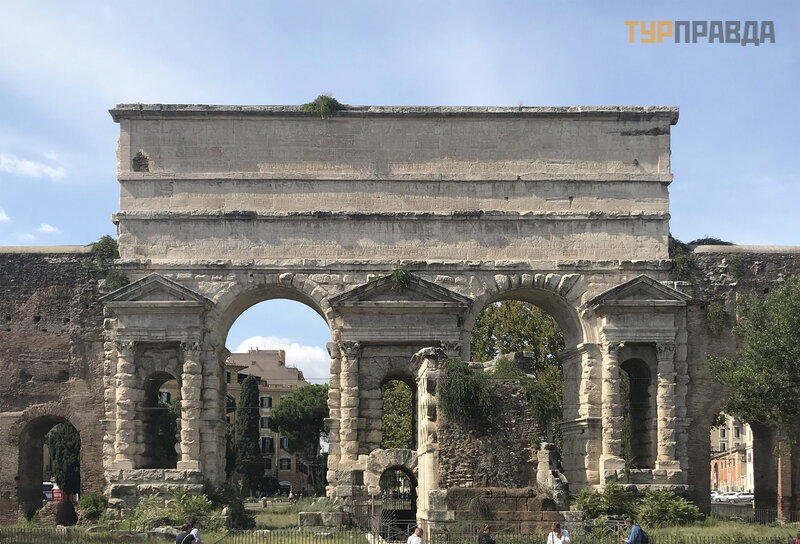
The tomb was found during work in the 16th century,
is still a mystery to scientists. The inscription reads that "This is the memorial of Mark Virgil Eurysaces, baker and supplier. " His wife is also buried there.
We return to the room along Via Principe Eugenio to visit the Ice Cream Palace, the oldest gelateria in Rome (Giovanni Fassi's gelateria), which has been operating here since 1880.
Once our hotel was located near Porta Maggiore, and since then we have always made a detour and come here to enjoy ice cream. Whole families go there, on weekends there are long queues.
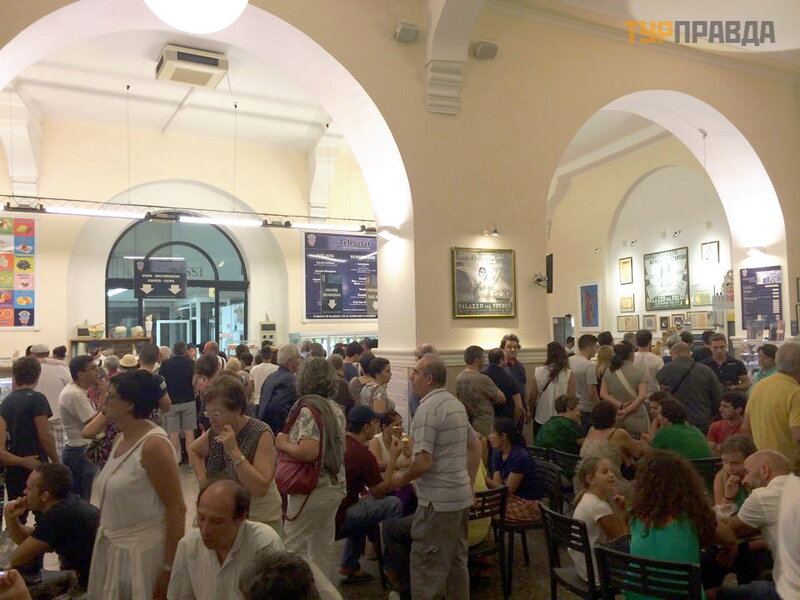
A huge selection of gelato, good prices, and from March to November on Wednesdays there are 50% discounts on ice cream, we once got on Wednesday, we didn’t know about the discounts, they knocked out a check for three scoops of ice cream, but we had to eat six each. Barely got out from the table.
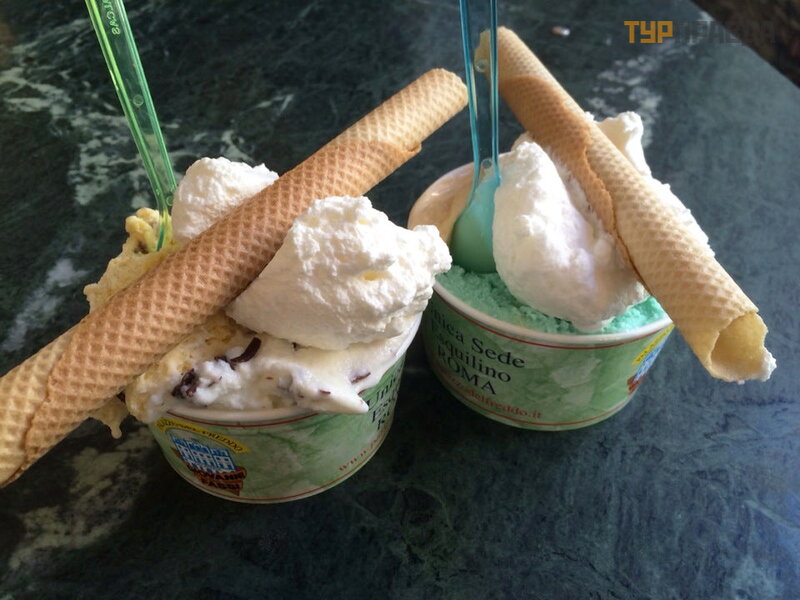
On this half of the day ended.
Continued here >>>
